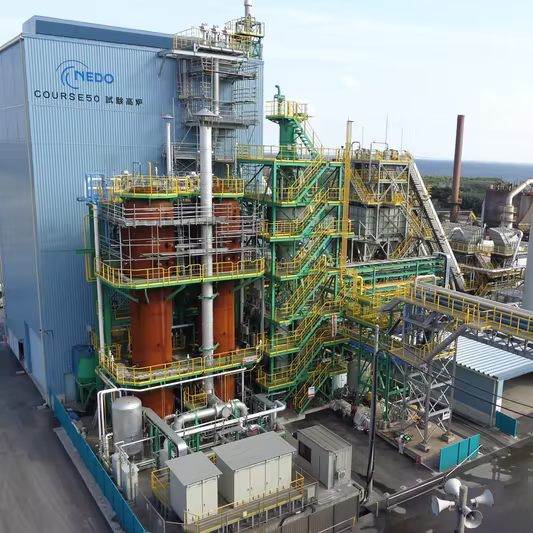
NEDO: Supporting hydrogen ironmaking / ammonia co-firing power generation:
-Support for the development of decarbonization technology-
New Energy and Industrial Technology Development Organization (NEDO)
Announced by NEDO on January 7th.
From the decarbonization fund totaling 2 trillion yen, we will subsidize “250 billion yen to nine related projects”.
Development of a new ironmaking method that utilizes hydrogen,
Ammonia is mixed with the fuel for coal-fired power generation,
Adopted a project to halve CO2 emissions.
Developed hydrogen iron making:
Nippon Steel,
JFE Steel,
At Kobe Steel, etc.
Allocate 190 billion yen for the development of the new ironmaking method.
A method of removing oxygen from iron ore with hydrogen instead of the current coal coke.
Demonstration at Nippon Steel’s Chiba Works.
Compared to the conventional iron manufacturing method, CO2 is reduced by more than 30%.
Practical use of technology by 2030.
Research and development of hydrogen iron making:
Overseas steel giants such as European ArcelorMittal are also working on it.
The speed of practical application affects the competitiveness of steel companies.
In addition, a method called the direct reduction method (DRI) will be used to demonstrate hydrogen technology.
Ammonia co-firing power generation:
JERA will work on fuel for ammonia power generation.
JERA:
By 2028 at coal-fired power plants
Develop technology that uses ammonia for half of the fuel.
Ammonia co-firing ratio:
Ammonia does not emit CO2 when burned.
The higher the co-firing rate, the lower the environmental load.
on the other hand,
The combustion temperature of ammonia is lower than that of coal.
Only about 20% can be mixed fire now.
In the 1940s, JERA will commercialize a thermal power plant that uses only ammonia to generate electricity.
Chiyoda Corporation:
TEPCO and JERA develop new catalysts to reduce ammonia production costs.
Current manufacturing method:
Currently, ammonia is produced under high temperature and high pressure of 400 to 500 degrees Celsius.
Produced at low temperature and low pressure:
Achieve low-temperature low-pressure production with the new catalyst and reduce costs.
A test plant will be constructed by FY2018, aiming to produce a large amount of ammonia.
Nihon Keizai Shimbun
https://www.nikkei.com/article/DGXZQOUC075US0X00C22A1000000/